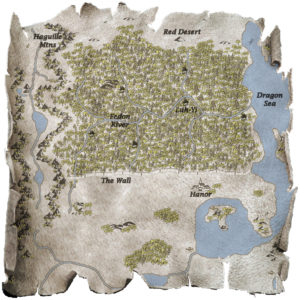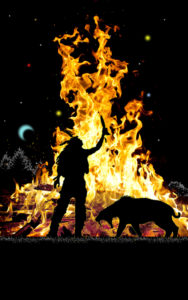Author’s Note: If you haven’t watched Casablanca, do so immediately. This is the movie that changed the way Hollywood made movies and it’s something every writer should understand. There are SPOILERS below, but you need the explanation to really make my points stick.
Casablanca (1942) is a landmark film and one of the top movies of all time. What most people don’t realize is that this movie, specifically the way it was written, changed filmmaking forever. Before Casablanca, the prevailing sentiment in Hollywood was that telling a character-based story required a much longer film. Take Gone With The Wind (1939) with a running time of 3 hours and 58 minutes as a good example of this. Most movies of the time period were shorter, nearly devoid of plot or substance, and played to the audience on a purely esoteric level.
My two favorite movies from this period come from my love of big band music (I was born 50 years too late). Sun Valley Serenade (1941) and Orchestra Wives (1942) feature Glenn Miller and his orchestra. Each of these movies are around the standard ninety minute timeline of most Hollywood features of the 20th century. If you watch them (and I do recommend them – pure popcorn fun), there is virtually no substance. This was a standard practice during this time. Casablanca came along and changed all of that by focusing on the character, Rick Blaine played by Humphrey Bogart.
What Casablanca did was very simple. Rick had several things (goals) that he wanted to achieve. Despite being an ex-patriot, Rick wanted to stand up against the Nazis, he also wanted to win back Ilse, his former lover, and he desperately needed friends in the local area to survive (mainly Henri, the police chief). The movie weaves the story of the “letters of transit” which are basically a “pass” from Nazi-occupied North Africa. Rick obtains them and they essentially are the ultimate “get out of jail free” cards. He’s prepared to use them when Ilse suddenly comes back into his life – with her new husband Victor (a famous Resistance leader).
Ultimately, the story puts Rick in the unenviable situation of having the letters of transit and not being able to win Ilse back. He goes to the airport to meet her and her husband and all of the audience’s emotional involvement in the storyline comes to a crescendo in the last three minutes and forty or so seconds. In that time period, Rick gives Ilse and Victor the letters of transit (“We’ll always have Paris”). When the Nazi officer responsible for the area arrives and demands the plane stop its departure, Rick kills him in front of the police chief, Henri. Instead of arresting Rick, Henri tells his men that Major Strosser is dead and they should round up the usual suspects. Henri and Rick walk off into the darkness – “I think this is the beginning of a beautiful friendship.”
The movie ends right there – fade out, roll credits, end scene. It’s brilliant.
Instead of a four hour character drama, Casablanca did the same thing in ninety minutes and it became a benchmark for storytelling. Not to say that movies after it, especially in the 1940s and 50s didn’t try to hold on to the fun, no substance formula – they did, but Casablanca proved that a character drama could fit in the same amount of time given to those popcorn flicks. How does that apply to fiction writers?
Very simple. Your book is likely going to be a movie in your reader’s head. Tie those emotional knots and deliver them to the reader as close together as possible for the maximum emotional response. If you’ve cried at the end of a movie, you recognize this. Try to do the same in your writing – your readers will thank you.



